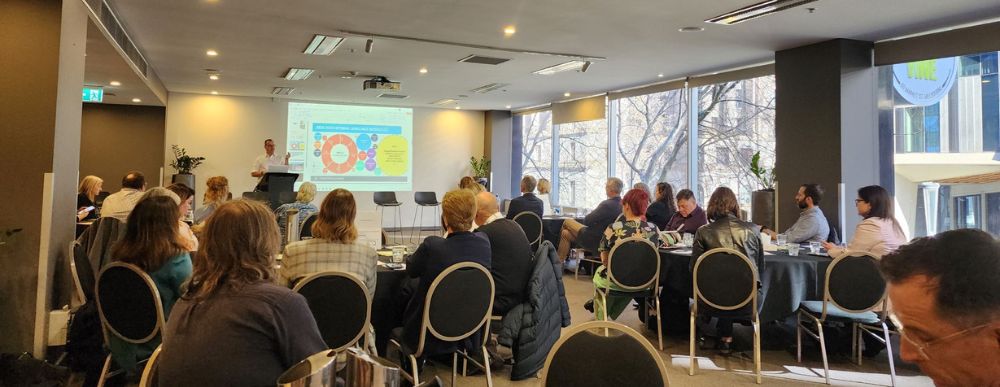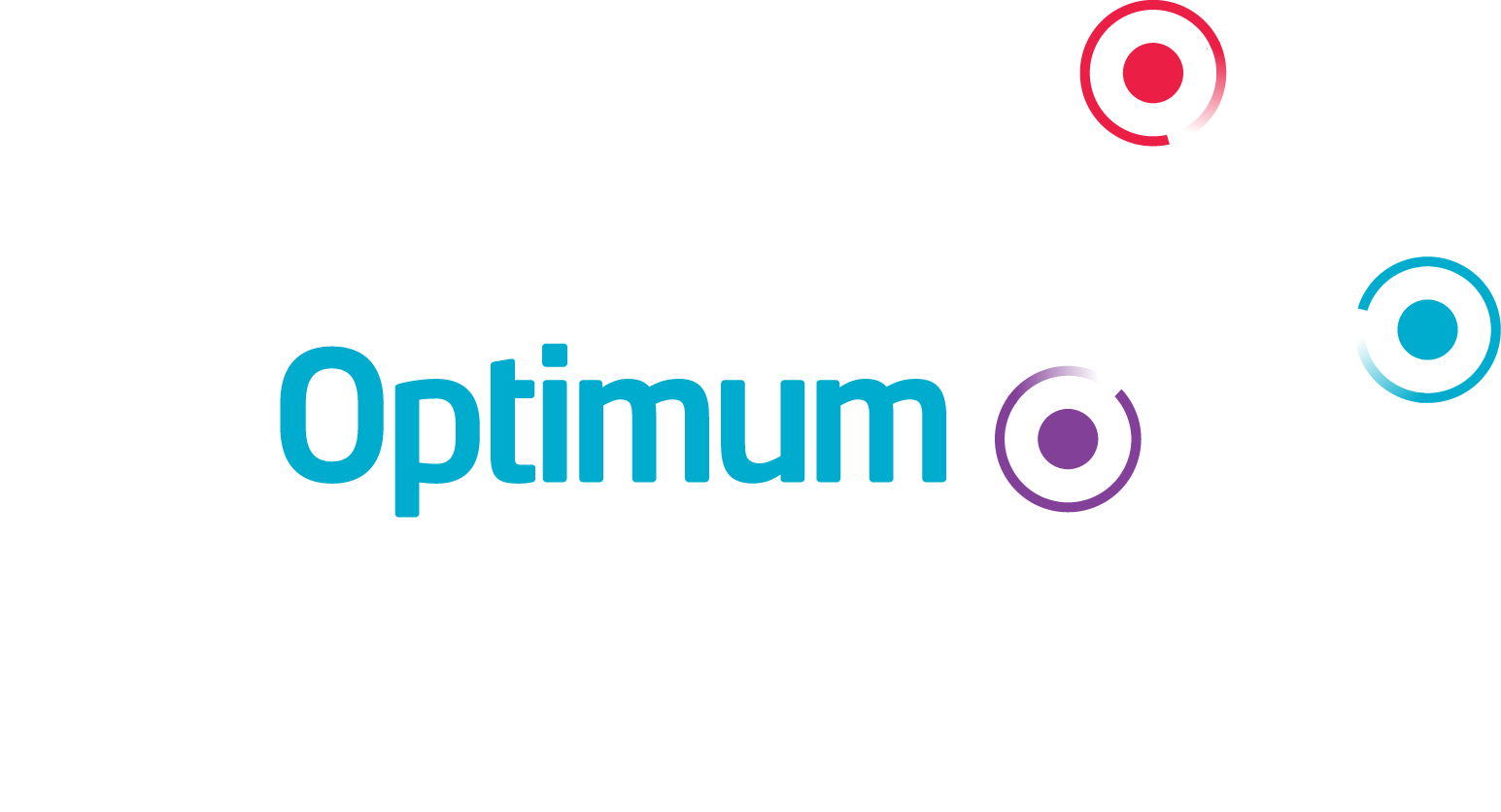Angela Shelton, CEO of Answers for Associations, recently shared her experience about the recent 2024 Association Leaders eXchange Roadshow, where she had the opportunity to engage with 250 association leaders across Australia and New Zealand. In this insightful blog post, she summarises the key takeaways from the event.
The roadshow delved into crucial topics such as governance, member engagement, and the integration of AI, offering fresh perspectives on how associations can navigate the challenges of today’s landscape. The discussions also highlighted the importance of strategic planning, risk management, and revenue diversification to ensure long-term success.
Optimum Contact’s Managing Director, Angela McDonald, was fortunate enough to be a facilitator at the Sydney, Melbourne, and Brisbane editions of the Association Leaders eXchange. During these events, she learnt about how using AI can both boost productivity, the importance of enhancing the member experience through creative ideas, and facilitated discussions around all things member engagement.
All of these issues are crucial to those within the Associations industry, and we hope you find some valuable insight in Angela’s summary and the topics covered across the different events. Take it away, Angela!

~ Angela Shelton
I had the privilege of hosting 250 Association Leaders across Australia and New Zealand during our 2024 Association Leaders eXchange roadshow. With so much happening in our industry, now seems like the perfect time to share some key insights from our discussions.
Key Governance Issues: Returning to Foundational Principles
Many are taking a fresh look at their governance frameworks to ensure they are robust and adaptable. There’s a growing emphasis on transparency, accountability, and clear decision-making processes to build trust and resilience within our organisations. We’ve noticed that some boards are focused more on operations than governance, and sometimes role expectations aren’t as clear as they could be, leading to less productive meetings.
We’re also hearing about the need for more cost-effective governance training and how frequent leadership changes can create instability. Engaging board members proactively can be a challenge, as well as ensuring new board members are properly inducted. Balancing governance and operational roles, preparing productive meetings, deciding on board member compensation, and updating outdated constitutions are other areas that many of us are working on.
By addressing these challenges with clear policies, regular training, structured induction programs, and strategic planning, we can better align our activities with our strategic goals and foster a proactive, collaborative governance environment.
Check out this article from Raph Goldsworth, who adds another element to this discussion: Key Governance Issues Keeping Association Leaders Up at Night | LinkedIn
Special thanks to our facilitators Colm Maguire, Kym De Britt, Raph Goldsworthy 😸, Michelle Blicavs, Michele Carnegie.

Membership: Focusing on Core Member Engagement Strategies
Engagement is being redefined with a focus on understanding our members’ needs and expectations more deeply. We’re moving towards hyper-personalised communications that mirror the predictive capabilities of platforms like Netflix, which can anticipate what users want before they even realise it themselves. This means using data-driven insights to tailor every interaction, ensuring members feel uniquely valued and understood.
Teams should work cohesively to showcase these personalised experiences, fostering a sense of community and relevance that drives engagement 365 days a year. By offering tailored member benefits and exclusive content, we can create a more immersive and engaging experience that retains current members and attracts new ones. This shift towards hyper-personalisation is essential in a digital age where expectations for customised experiences are higher than ever.
Special thanks to our facilitators Olena Lima CAE, Angela McDonald and Jane Carey.
Embracing AI: A Practical Tool for Today’s Professionals
AI is no longer a futuristic concept but a practical tool for improving efficiency and member experience. Many of us are keen on integrating AI to automate routine tasks, provide data-driven insights, and enhance member interactions through personalised recommendations and support. Professionals should consider using easy off-the-shelf AI products to boost productivity. While it’s not an overnight solution, it’s worth diving in and giving it a go.
We understand there might be some pushback, and there’s a common fear that AI will replace jobs. However, it’s important to note that your job won’t be taken by AI, but by someone who is effectively using AI. Embracing AI is about enhancing our capabilities and streamlining tasks at an organisational level. This bigger picture includes automating repetitive tasks, freeing up time for strategic thinking, and making data-driven decisions that can significantly benefit our associations.
Take a look at how the REINSW is leveraging AI with Alice their AI Board Associate (https://bit.ly/3WGGUTa) It’s a great example of taking it to the next level and reaping the benefits. By integrating AI thoughtfully, we can create more efficient workflows, improve member satisfaction, and drive our organisations forward.
Special thanks to our facilitators Julian Moore and Dawid Naude.
Events: Creating Memorable and Impactful Experiences
Events play a critical role in member engagement and association success. We’re getting back to basics by focusing on the strategies that best support how our members engage and interact. This involves understanding their preferences, creating value-driven experiences, and overcoming common challenges such as last-minute bookings, reduced professional development budgets, and the need for flexible venues. By addressing these issues head-on, we can ensure our events are well-attended, impactful, and memorable.
Special thanks to our facilitators Cindy-Lee Bakos, Lana Howden and Angela Shelton.
CPD & Education: Enhancing Value Through Relevant Content
Professional development and continuing education remain a priority and are increasingly trending. There’s a growing emphasis on curating high-quality, relevant content that meets the evolving needs of our members. Many are now also tapping into the revenue opportunities these offerings present. By offering tailored learning opportunities that cater to diverse needs, we can ensure members receive the education and skills they require to succeed. This involves understanding their learning preferences, delivering content in various formats, and ensuring the material is timely, applicable, and easy to access.
Special thanks to our facilitators Tony Maguire, Jeremy Burnet and Danielle Hargrove.
Sponsorships & Partnerships: Using AI to Create Value and Efficiency
We’re learning how AI can streamline the sponsorship process, helping us connect with the right people and create a seamless experience. By leveraging data to understand sponsor needs, we can build stronger collaborations. AI enables us to personalise sponsorship packages, tailor communications, and provide insights that align with sponsors’ goals. Collaborative efforts are essential for expanding our reach and impact.
Special thanks to our facilitator Julian Moore.
Revenue Generation: Unlocking New Streams
A key topic of discussion has been the importance of diversifying and stabilising revenue streams for associations. It’s crucial to identify untapped revenue opportunities, such as monetising online learning platforms and developing new products. Associations are also exploring innovative revenue models, like subscription-based services and value-added member programs, to secure a more stable financial future.
When presenting these opportunities to the board, it’s crucial to highlight that our non-profit status (NFP) is simply a tax designation and not a limitation. Revenue generation is essential for reinvesting in our mission, enhancing member benefits, and driving growth. Emphasise the bigger picture by showing how new revenue streams can support strategic initiatives, enable greater investment in member services, and ensure sustainability.
Aligning these initiatives with the association’s strategic goals can help gain board buy-in and foster support. Sharing success stories from other associations and suggesting pilot programs to test new revenue models can provide valuable insights and build confidence in these strategies.
Special thanks to our facilitators Deanna Varga (MBA, GAICD, CICE) and Lindsay McGrath.
Non-Dues Revenue Models: Diversification and Growth
I discussed several topics, but one important area is alternative revenue models. Associations must diversify their revenue streams beyond traditional membership fees. By exploring innovative models like value-added services, subscription-based programs, and unique partnerships, associations can achieve sustainable growth.
- Collaboration is key. Aligning with partners who can financially support and invest in association initiatives creates continuous, 365-day engagement touchpoints with members. This not only enhances the overall member experience but also strengthens the association.
- Innovative business models and strategic alliances allow associations to reinvest in their mission, offering greater member benefits and driving growth. This approach ensures resilience and diversification in an ever-evolving landscape.
Risk Management: Understanding Practical Applications
We are recognising the importance of comprehensive risk management strategies. Associations must look beyond everyday operations and consider broader risks and necessary protections, including adequate insurance and proactive risk mitigation. Recent case studies show severe consequences from insufficient coverage, causing financial and operational setbacks.
Why is insurance often pushed to the bottom of the list? It’s not a set-and-forget thing. Associations need to consider risks for their volunteers and events. Are you adequately covered? What risks are worth paying for? Prioritising insurance ensures resilience and effective service.
Special thanks to our facilitator Alexander Coombes and Lachlan Stretton.
Strategic Planning: Charting the Course for Future Success
Strategic planning has been a key focus, with many of us emphasising the need for clear, actionable plans that align with our organisation’s mission and goals. Effective strategic planning involves setting realistic objectives, measuring progress, and being adaptable to change. The importance of involving all stakeholders in the planning process to ensure buy-in and commitment was highlighted.
Special thanks to our facilitator Belinda Moore.
People and Talent: Building a Strong Foundation
Building a strong organisation starts with effective talent acquisition. Trends from our recent Leaders eXchanges have highlighted the critical importance of attracting, retaining, and developing talent. The job market is highly competitive, and smaller associations often face budgetary constraints. However, benchmarking your salaries is essential to stay competitive.
Associations must consider what they need and be willing to have conversations about flexible work arrangements, as most people now prefer the option to work from home. By focusing on these key trends, associations can build a robust foundation for long-term success.
Special thanks to our facilitator Cynthia Harris.
Right now, we are all faced with adopting the right strategies and resources to help our associations succeed. These discussions are driving our decisions, and there’s a strong trend towards getting back to basics and strengthening foundational elements. By focusing on core principles and innovative strategies, we are better positioned to thrive in an ever-changing environment.
So, where to from here? Let’s keep the momentum going. I encourage you to reach out, connect with these professionals, and continue the valuable discussions we’ve started. Consider getting involved with the Answers Community—a dynamic network of association professionals from across Australia and New Zealand. In times like these, collaboration is key. Together, we can drive meaningful change and support each other’s growth.





